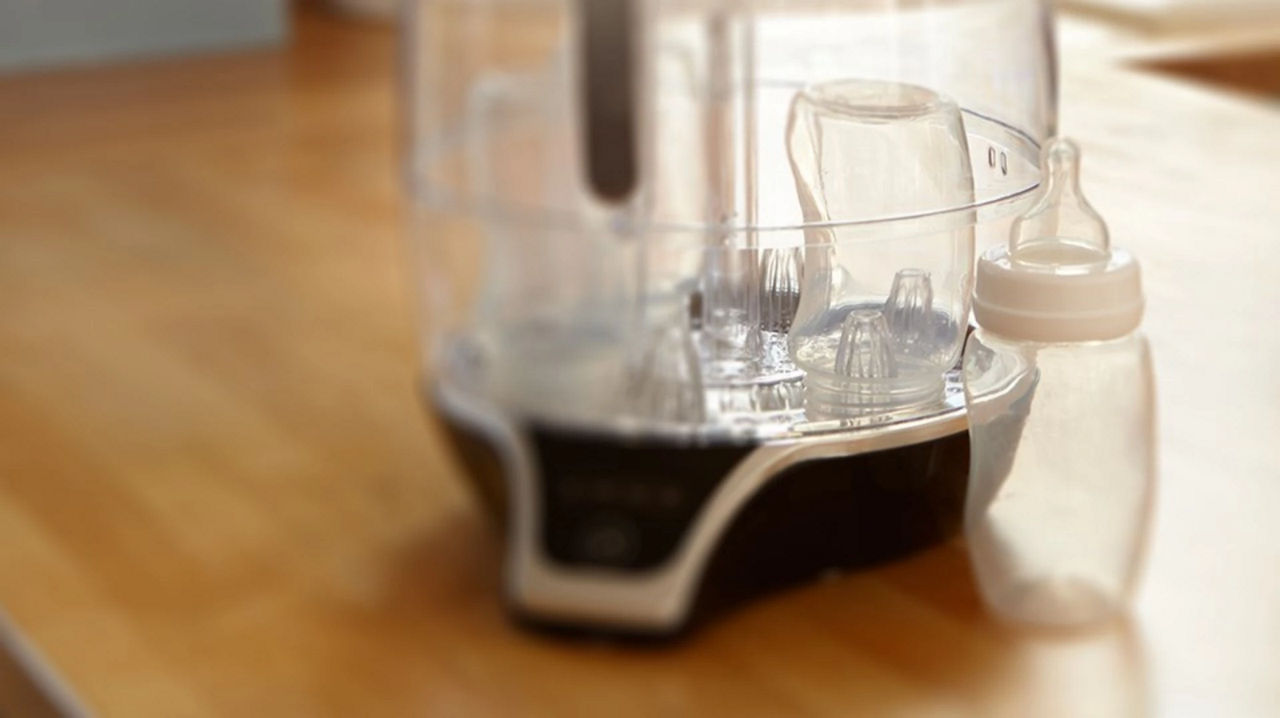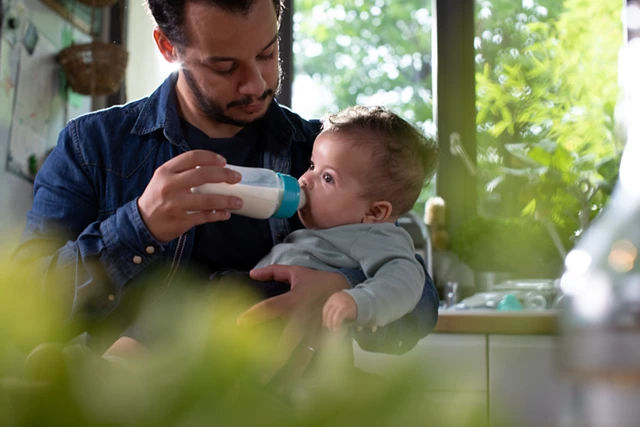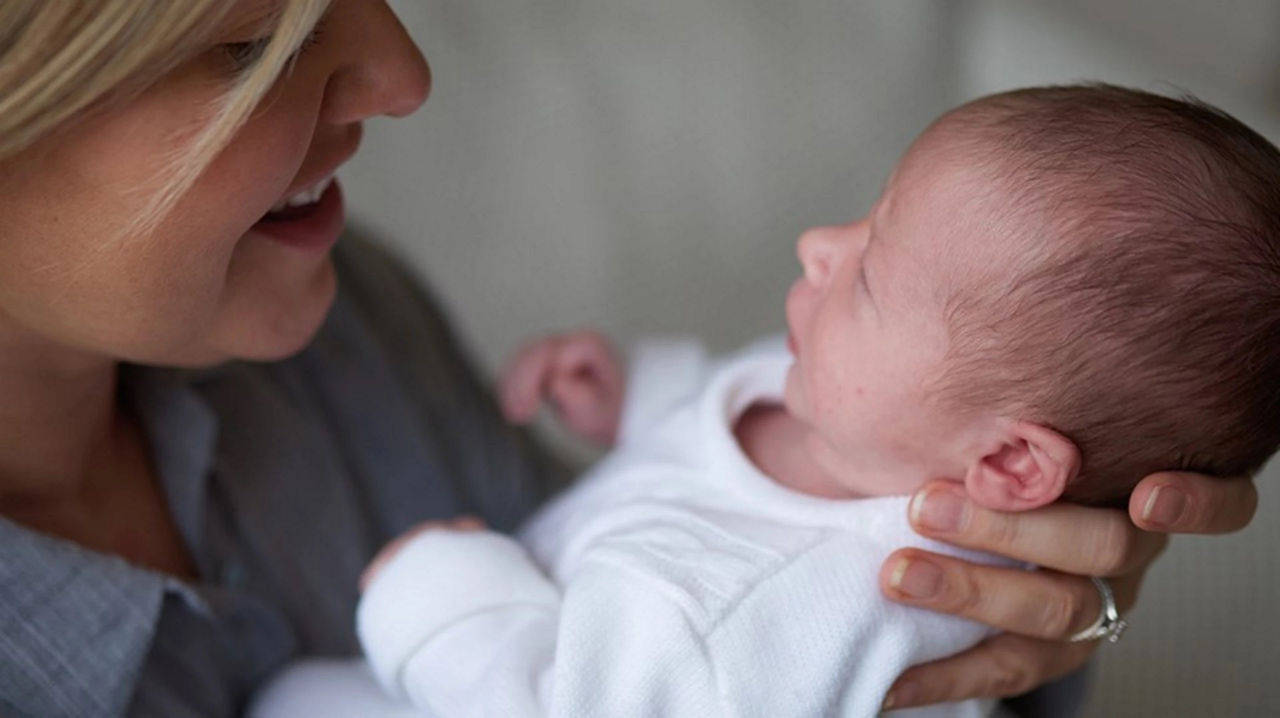How to sterilise baby bottles and when to stop
Whether you’re bottle feeding exclusively with either breast milk or baby formula, or you’ve chosen to combine bottle feeding alongside breastfeeding, it’s essential that you follow the proper cleaning and sterilising steps for your baby’s feeding equipment1, 2.
To help you get started, here we’re providing lots of practical advice and guidance around how to sterilise baby bottles, the different methods you can use, and why it’s so important for your baby’s health.

Steps to take before sterilising your baby's feeding equipment
Before you sterilise any of your baby’s feeding equipment:
- Wash your hands thoroughly with soap and water.
- Clean the work surfaces you intend to use with hot and soapy water.
- Make sure that the feeding bottles, teats and all other parts (suction rings and bottle covers for example) are not damaged and are cleaned in hot soapy water as soon as possible after a feed. You can do this using a clean bottle brush and a small teat brush.
- If you’re expressing your breast milk, you’ll need to clean your breast pump in hot soapy water, and wash the cup, bottle or spoon and all the washable parts of the breast pump properly3.
- Once washed, make sure the equipment is thoroughly rinsed in cold and clean running water before sterilising.
Depending on which method you decide to use, you’ll also need to make sure that you’ve got everything you need to ensure that your baby’s feeding equipment is fully sterilised. For example:
- A bottle brush.
- Sterilising fluid.
- A steam steriliser (if you’ve chosen to use one).
If you prefer, you can clean your baby’s feeding equipment in the dishwasher by placing the bottles, lids and teats facing downwards. However, whilst this will clean the equipment, it doesn’t sterilise it, and you might want to wash teats separately to ensure they’re entirely clean.
How to sterilise a baby bottle
It doesn’t matter whether you’re using baby bottles for formula feeds or for storing breast milk - they’ll still need to be sterilised before each one of your baby’s feeds. And there are a number of different methods you can use to do this4:
It’s all about finding the method that suits you the best. As your baby’s immune system is still developing5, it’s vital that all feeding equipment is kept clean and sterile to help reduce the chance of infection.
Steam sterilisers
Steam sterilisers can be used either in the microwave or plugged in at the mains. They work on the basis that water is poured into the unit, which then creates steam to kill any bacteria. There are several different steam sterilisers available, and most are easy to use. You should bear in mind however that they can take up a fair bit of space, so think about where you’ll put it before you invest.
Always follow the manufacturer's instructions to ensure that you’re using your steam steriliser correctly, and make sure that the openings of the bottles and teats are facing down when you’re using one.
Cold water sterilising solution
Some steam sterilisers can be used for this sterilising method, or alternatively you can use a container that’s watertight and clean3.
Sterilising solutions come in either liquid, tablet or ready to use formats. Following the manufacturer’s instructions, you’ll need to add your chosen sterilising solution to cold water and add your baby’s feeding equipment. It’s important to ensure that all the equipment is fully submerged (most sterilisers have a plunger or floating cover to help with this), and that there are no air bubbles in the bottles or teats.
Your baby's feeding equipment should be left in the sterilising solution for at least 30 minutes, and the sterilising solution should also be changed every 24 hours.
Boiling
This sterilising method doesn’t require any specialised equipment and is very easy to do. It involves simply adding your baby’s feeding equipment to a large pan of boiling water for at least 10 minutes - most bacteria are killed once boiled in a water temperature of 100℃3.
When using this method:
- You should ensure that the items you want to sterilise are safe for boiling.
- Set a timer or an alarm, as this can be helpful to remind you to turn the heat off.
- Keep in mind that bottle teats tend to get damaged more quickly with boiling, so always check that the bottles and teats are not cracked, torn or damaged. If they are, replace them immediately.
Whichever method you use, once you’ve finished sterilising, leave the bottles and teats in the steriliser or pan until you need them. If you take them out, immediately place the teats and lids on the bottles and put them in a clean, disinfected area, or on the upturned lid of the steriliser. Don’t forget to wash and dry your hands before handling the sterilised equipment, and ideally use sterile tongs where possible.
When can I stop sterilising baby bottles?
Can I sterilise my baby bottles in the microwave?
Yes, you can sterilise your baby’s bottles in the microwave, and to do so, you’ll require a steam steriliser2, 4. Not all sterilisers are microwave friendly, so be sure to check this beforehand and follow the manufacturer’s instructions. In addition, you’ll still need to clean the bottles and teats in hot soapy water, and make sure they are all facing downwards when you put them in the steriliser2.
Some baby bottles can be self-sterilised in the microwave and can be very convenient when travelling. However, remember to again follow the manufacturer’s instructions exactly to ensure that your baby’s bottles are fully sterile.
Does the dishwasher sterilise baby bottles?
What if I’m breastfeeding?
One of the many benefits of breastfeeding is that it requires no equipment, and therefore no sterilising. However, this only applies if you’re exclusively breastfeeding.
If you’re combination feeding with either expressed breast milk or a formula feed, then the bottles and teats that you use will need to be sterilised. You’ll also need to sterilise the necessary parts of your breast pump too, along with any other container that you use to store your breast milk.
What happens if you don’t sterilise baby bottles?
If you don’t sterilise your baby’s bottles and teats, this could allow bacteria from breast or formula milk to develop. This may then lead to your baby developing infections including diarrhoea and vomiting1, 4, 5.
How long do bottles stay sterile?
After sterilising your baby’s feeding equipment, you can leave sterilised items in the steriliser or pan until you need them. However, the equipment can normally stay sterile for up to 24 hours.
In any case, if you do take sterilised items out of the steriliser or pan, make sure your hands are clean and dry, or you use sterile tongs to do so. You should also ensure that you put the teats and lids on the bottles straight away and place them in a clean and disinfected area3, 4.
Related articles

Need some help?
You can get quick answers to common questions in our FAQs.
Alternatively, if you need help with general pregnancy or baby advice, or maybe on using or ordering our products - our expert team are always on hand to talk about feeding your baby.
- NHS. Guide to bottle feeding [booklet] 2012. Available at https://www.ouh.nhs.uk/maternity/feeding/documents/guide-to-bottle-feeding.pdf. [Accessed September 2023]
- NHS Start for Life. How to sterilise equipment [online]. Available at https://www.nhs.uk/start-for-life/baby/feeding-your-baby/bottle-feeding/how-to-make-up-a-feed/how-to-sterilise-equipment/. [Accessed September 2023
- National Childbirth Trust. How to sterilise baby bottles, breast pumps and other feeding equipment [online] 2022. Available at https://www.nct.org.uk/baby-toddler/feeding/practical-tips/how-sterilise-baby-bottles-breast-pumps-and-other-feeding-equipment. [Accessed September 2023]
- NHS. Sterilising baby bottles [online] 2023. Available at https://www.nhs.uk/conditions/baby/breastfeeding-and-bottle-feeding/bottle-feeding/sterilising-baby-bottles/. [Accessed September 2023]
Yu JC, Khodadadi H, Malik A, et al. Innate Immunity of Neonates and Infants. Front Immunoi. 2018;9:1759. Published 2018 July 30.
Last reviewed: July 2023
Reviewed by Nutricia’s Medical and Scientific Affairs Team



